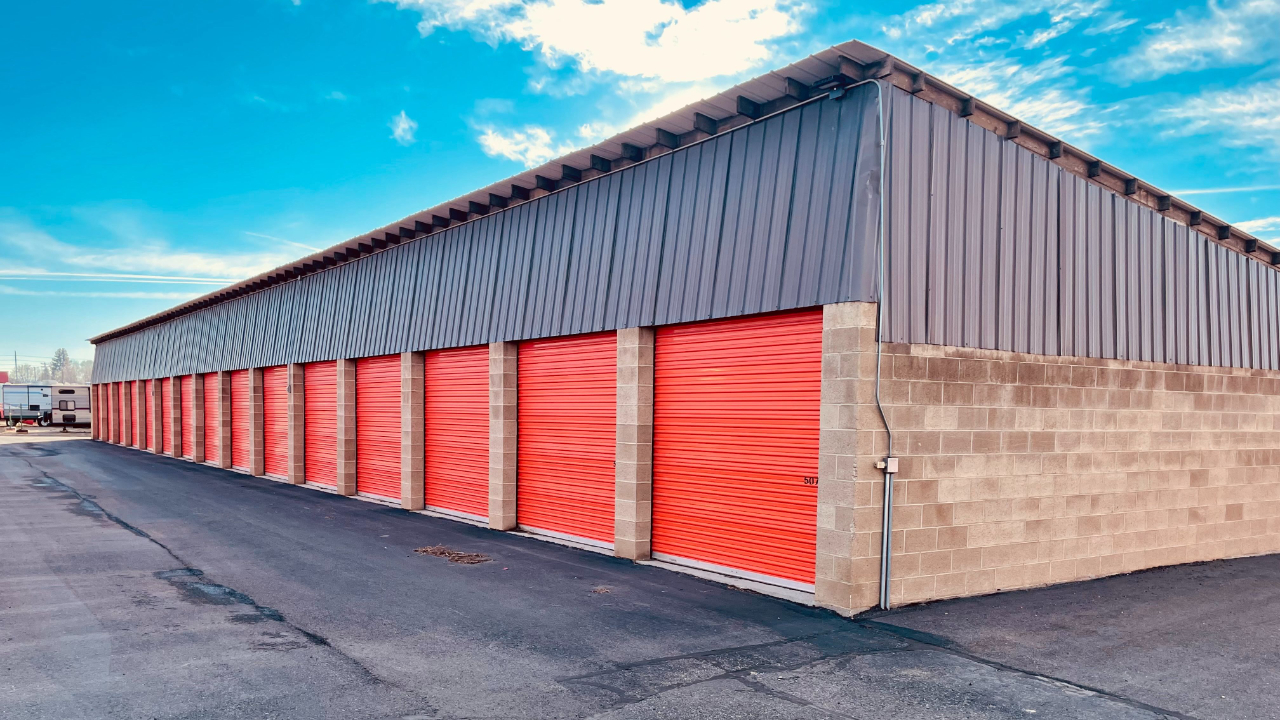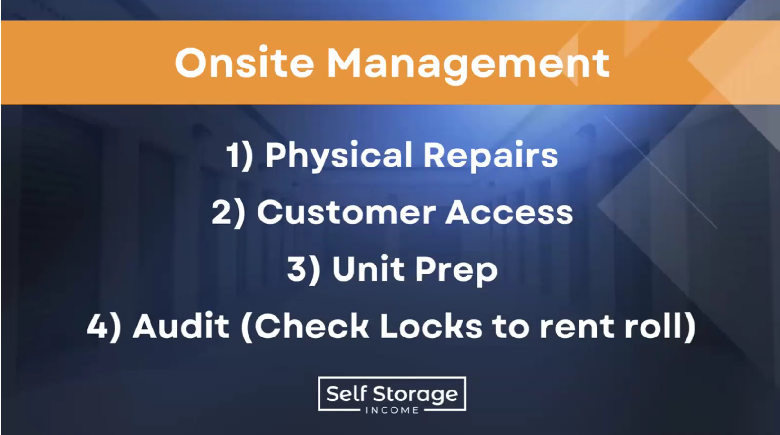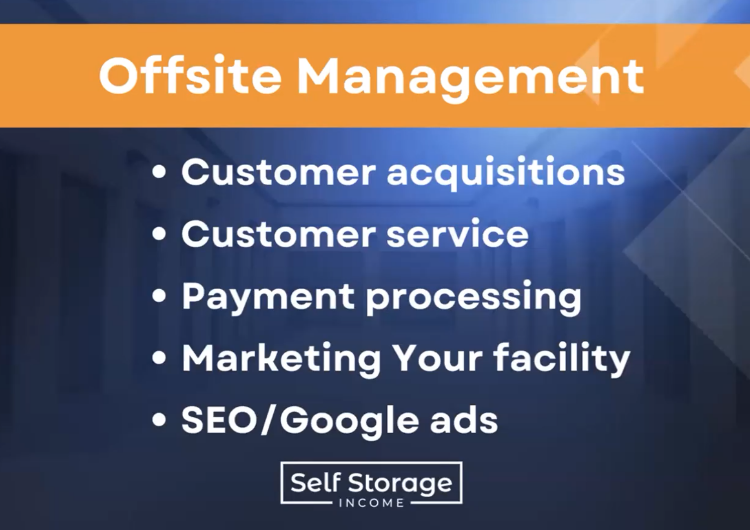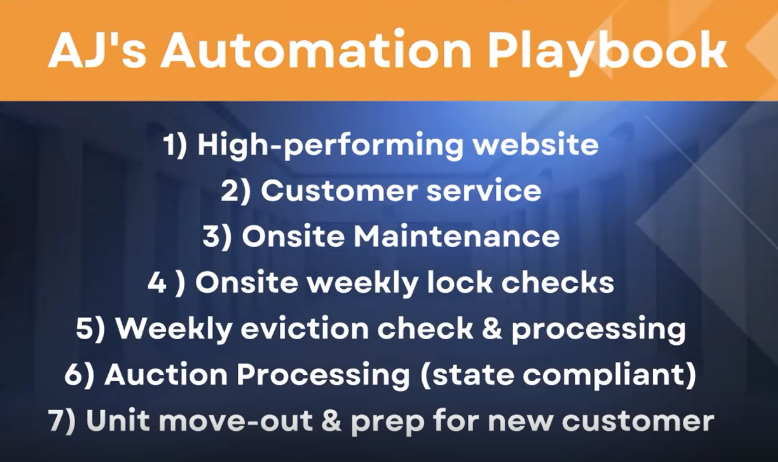
Mastering Self-Storage Operations: Understanding Operations and Opportunities
May 22, 2023Investing in a self-storage business requires an integral understanding about how the industry runs. To put it bluntly, self-storage is an operator's game. The success of a self-storage facility hinges on the person running it. This makes it crucial for investors to have a comprehensive understanding of operations and underwriting. There are various approaches to consider when investing in self-storage, and exploring these avenues from different perspectives is key to understanding how to invest independently and paramount to success.
The variation between operators can be wide. For that reason, I built an ecosystem of companies that includes architecture, debt brokerage, management, development, and tech companies - all of which assist with the management and operations of storage. Our superpower is operations, so we designed everything to leverage that.
It's important to note that others don't need to do everything we do, but at the very least, perhaps a better understanding can help guide others to success. Our initial business model was simple: make people pay to answer the phone and do marketing, because that's what others weren't doing. It may sound ridiculous, but it worked really well.
Understanding Self-Storage Operations and Underwriting

Understanding how to operate a storage facility is crucial because it dictates expenses and influences how deals are underwritten. Our operations superpower is two-fold and it lies not only in our operating ability, but in the fact that our operating approach uncovers deals that others don't see. While you don't need to have our level of expertise, you should understand the plan and how operations create opportunities. People want to partner with those who know how to operate, so it's important to immerse yourself in the industry and gain knowledge. The more you know, the more deals you can find, and the more value you can bring to the marketplace.
Onsite Management is Crucial for Storage Facilities
Running a successful storage facility requires proper management and oversight to ensure that the property is secure, well-maintained, and running smoothly. One crucial component of this is Onsite Management. Let's take a closer look at why onsite management is important for storage facilities and how it can help to create a better overall experience for tenants and owners alike.

One of the key tasks is unit preparation. This involves sweeping out units and conducting audits to check that all units are occupied and rented out. Onsite management is also responsible for providing customer access and showing new tenants their unit to ensure they have the necessary keys or codes to access it. In addition, onsite management must oversee processes such as evicting tenants or auctioning off units due to non-payment.
Well-Maintained Storage Units Lead to Success
Proper onsite management is essential for maintaining a successful storage facility. Having units that are well-maintained and ready for new tenants increases the likelihood of quick rentals. Having someone available to show potential tenants around and answer their questions helps build trust and confidence in your facility. Onsite management also helps to prevent and mitigate problems that may arise, such as tenants causing problems or not paying their rent. With someone onsite, these issues can be resolved quickly and effectively, preventing potential damage to the facility or other tenants' property.
Understanding Offsite Management
Now I want to switch gears to discuss another aspect of site management. While onsite management is important for storage facilities, there are situations where Offsite Management can also be beneficial. In remote facilities, having an offsite management solution can provide the necessary oversight and support to ensure the facility runs smoothly. Offsite management can also be a cost-effective solution for smaller facilities that may not have the resources to support a full-time onsite manager. It can also provide a viable alternative to traditional onsite management. Whether you are looking to reduce costs or improve efficiency, understanding the role of offsite management in storage facilities can help you make the right decision for your business.

Onsite management refers to tasks that must be completed in-person, such as inventory management, cleaning, and maintenance. Offsite management, on the other hand, involves tasks that can be completed remotely like:
- Customer acquisition
- Customer service
- Payment processing
- Marketing
- SEO/ Google Ads
While there is a clear distinction between the two, it's important to recognize that many operations require a blend of both. Let’s take a closer look and discuss that blend and gain a better understanding of how these two things fit within those operations.
3 Types of Self-Storage Operations
Self-storage is a growing industry, with more and more people turning to storage facilities for their excess belongings. As a result, there are several types of self-storage operations available to meet the varying needs of customers. The three main types of self-storage operations are fully managed, partially managed, and offsite management. In this section, we will explore each of these types of operations in detail. Understanding the distinction between these types of operations can help you make an informed decision about which one is right for you.
- Fully Managed
- Partially Managed
- Offsite Management

It’s also important to know how I've categorized the size of facilities:
- Small facilities- 50,000 or fewer net rentable square feet
- Medium-sized facilities - have 50,000 to 100,000 net rentable square feet
- Large facilities- over 100,000 net rentable square feet
Truly "Manless" Storage Facilities Don't Exist
First things first, let me clear up a common misconception - “manless” storage facilities do not exist. I greatly dislike the term, because it does not tell you exactly what's going on. This leads us to the various automation processes, how they work, and how you can implement it. In the storage industry, we have offsite management, partially managed, and fully managed facilities.
- Fully Managed Facilities
Fully managed facilities are typically large facilities that have office spaces, showrooms, products, inventories, and are heavily used by people. These facilities range from 800 to 1500+ units and are usually 10 acres or more. There's a lot going on in these facilities, people are constantly coming in and out, so it's logical to have a person on site. In fact, it would never make financial sense to not have a person on site because we would be contracting out with people to come to the site constantly. We have literally 1600 units being used and cars coming through it with different types of utilizations that are fully managed.
- Partially Managed Facilities
Partially managed facilities are those that fall between fully managed and automated facilities. These facilities are generally smaller, around 50,000 net rentable square feet or below. If a facility has less than 50,000 net rentable square feet, it might not be economically feasible to have an onsite manager. It can be challenging to generate enough revenue. However, when the facility's size increases to 50,000 to 65,000 or even up to 100,000 square feet, there will be more activities and visitors, requiring more on-site presence.
This is where partially manned management comes into the picture. When the facility grows even more substantial, fully manned management becomes necessary, which can be a complex logistics process. Partially managed facilities usually have a part-time employee who trades off days between sites. For larger partially managed facilities, we have regional managers and roaming managers who oversee multiple sites.
- Automated Facilities
Automated facilities are those that rely on technology to run, and there is no need for an onsite manager. This type of facility is usually smaller, with 50,000 or fewer net rentable square feet. Automation capabilities can vary, but the most automated facility I manage has keyless technology integrated into the asset. This allows customers to buy, sign leases, purchase their units online, and use their phone to activate gates and doors.
Streamline Operations and Customer Experience in Storage Facilities
Our goal is to seamlessly integrate all operations into one system, without any separation between them. This is why we are building out an automation platform that can be used across all of our facilities, whether big or small. Our system allows us to allocate employee hours to each asset, making it easy to operate regardless of the size of the facility. Unlike many other companies who rely on bolted-on operating systems, we have started a tech company to streamline our processes. We want everything in one fluid and integrated system, from the beginning to the end of the customer lifecycle. We are working to achieve this goal. While some may claim that this level of integration is rare, we believe that it is possible and achievable with the right approach. For that reason, I made a playbook that is super simple and can be used to automate a storage facility using just a phone and email. Get your hands on this playbook and unlock the secrets to self-storage automation here.

Creating a Seamless Customer Experience with Advanced Technology in Self-Storage
As stated earlier, the ultimate goal is to create a completely seamless customer experience from start to finish. We are doing this by utilizing advanced technology such as video screens, no-key locking systems, and real-time tracking of customers as they move through the facility. Our aim is to eliminate the need for customers to interact with any person during the customer acquisition process, and have everything managed through a seamless method.
However, achieving this level of integration is not an easy feat, as it requires careful coordination of different technology stacks. Nonetheless, many companies, including us, are working towards this goal to deliver a fully automated system that can be easily utilized by all storage facility customers. Once implemented, customers can simply use the system and have their entire experience fully automated.
Self-storage automation has revolutionized the industry by streamlining processes, improving customer experience, and increasing profitability. From automated access control systems to online rental and payment portals, technology has made self-storage facilities more efficient, secure, and convenient for customers. While implementing automation may require upfront investments, the long-term benefits such as reduced labor costs, improved revenue streams, and enhanced customer satisfaction make it a worthwhile investment for self-storage businesses. As technology continues to advance, self-storage automation is only going to become more prevalent, and those who embrace it will be poised for success in the years to come.


